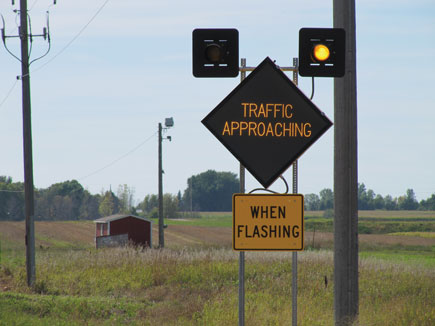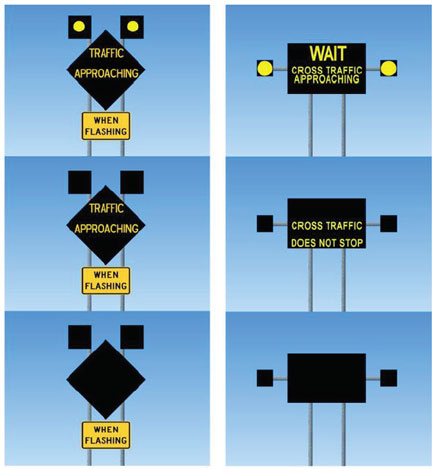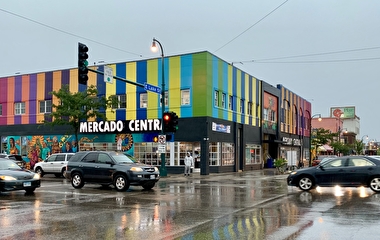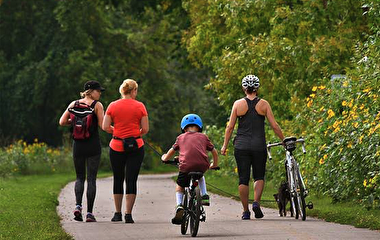In an effort to reduce dangerous right-angle crashes at rural intersections, the Minnesota Department of Transportation (MnDOT) has deployed dynamic warning signs at approximately 52 sites throughout the state. Using sensor technologies, these signs provide real-time traffic information to motorists at non-signalized intersections where cross traffic does not stop, warning drivers on the minor road when it is unsafe to enter the intersection. However, a number of sign-related complaints have been received from local road users.
To address this issue, U of M human factors researchers studied the current sign to identify what features or layouts may be problematic and propose safe and efficient alternatives. “We directed special emphasis to the most vulnerable driver populations, such as older drivers and novice teenage drivers,” says Nichole Morris, director of the HumanFIRST Laboratory and the study’s principal investigator. The study was sponsored by MnDOT.
The research team first surveyed Minnesota county engineers regarding their experiences, perceptions, and complaints or comments from local road users. “In addition to the largely negative feedback from drivers, we learned that many county engineers incorrectly interpreted how the system functions—a number of them were not sure how the fail-safe/inoperable mode works,” Morris says.
Through iterative usability studies, researchers then examined alternative designs to produce three sets of sign options for a driving simulation study. The simulation study, with 120 participants, evaluated the safety effectiveness and efficiency of the sign options among teen drivers, middle-aged drivers, and older drivers.
The results indicate an overall safety benefit of sign deployment. “All the sign options except for one enhanced drivers’ gap-acceptance performance,” Morris says. “At intersections with inadequate sight distance, gap acceptance tended to be significantly better.”
(right column) might offer comparable safety benefits but fewer potential
risks. The sign consists of three different sign states: “Don’t cross/turn”
state (top row); “Sign is on/operating and no traffic is detected” state
(middle row); and “Sign is off/inoperable” state (bottom row).
The warning system’s benefits varied among the three age groups: middle-aged drivers demonstrated the most potential for safer gap acceptance; teenage drivers did not appear to be significantly assisted by the warning system, despite their self-reporting that the sign assisted them; older drivers tended to have a significantly reduced risk of accepting an unsafe gap but were also less efficient in using the system (they waited longer and rejected safe gaps more frequently).
The signs might simultaneously incur potential risks for drivers. “For example, the risk of stop-sign violations was found to be the greatest when the system was turned off due to a malfunction,” Morris says. Drivers also tended to check traffic much less often with the presence of the warning system.
After reviewing the study results, researchers identified an alternative sign design for future field tests that may demonstrate comparable safety benefits to the original sign with fewer potential risks. Specifically, certain design elements—an action word or icon—were recommended for consideration in follow-up field evaluations and future implementations.
“Intersection warning systems are an important tool for MnDOT as we push toward having zero deaths due to traffic crashes,” says Ray Starr, acting state traffic engineer with the Office of Traffic Engineering. “This study provides valuable information that is helping MnDOT consider any design changes for future versions of the warning system.”
The findings may also have a broader implication for the design, development, and implementation of effective intersection countermeasures on rural, urban, and suburban roadways, Morris adds.




